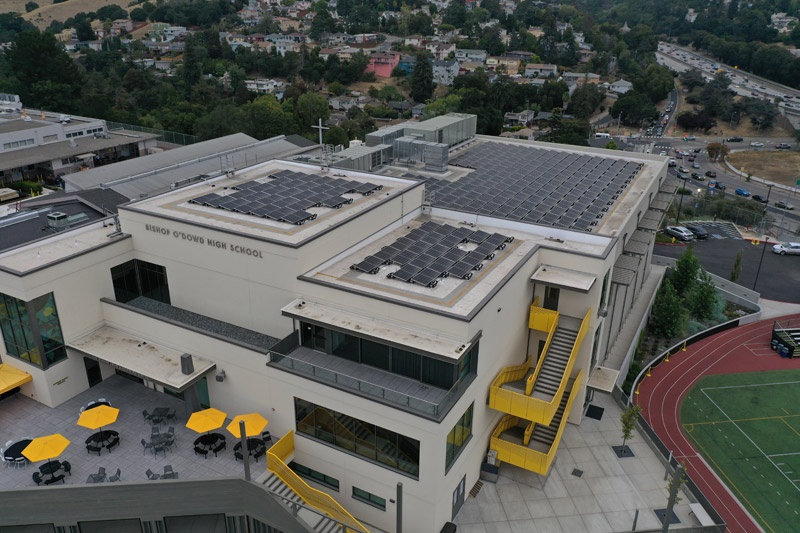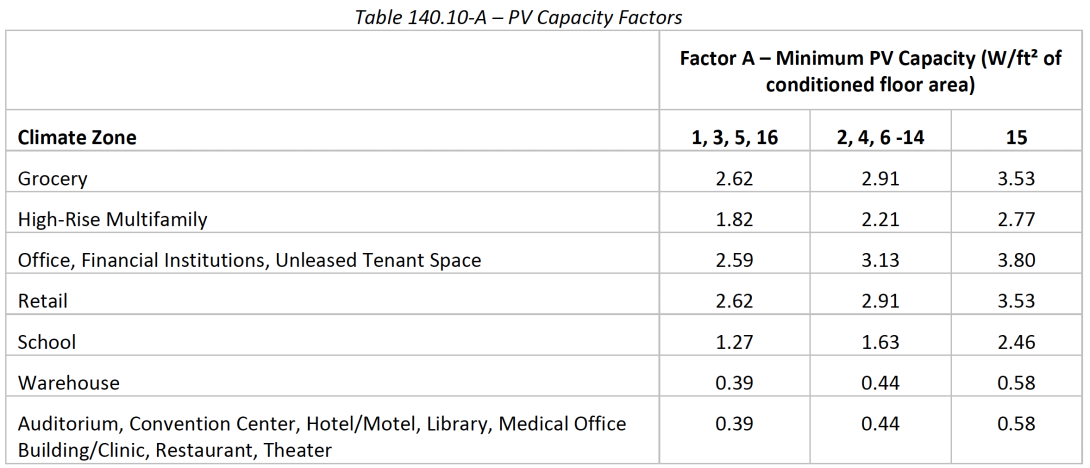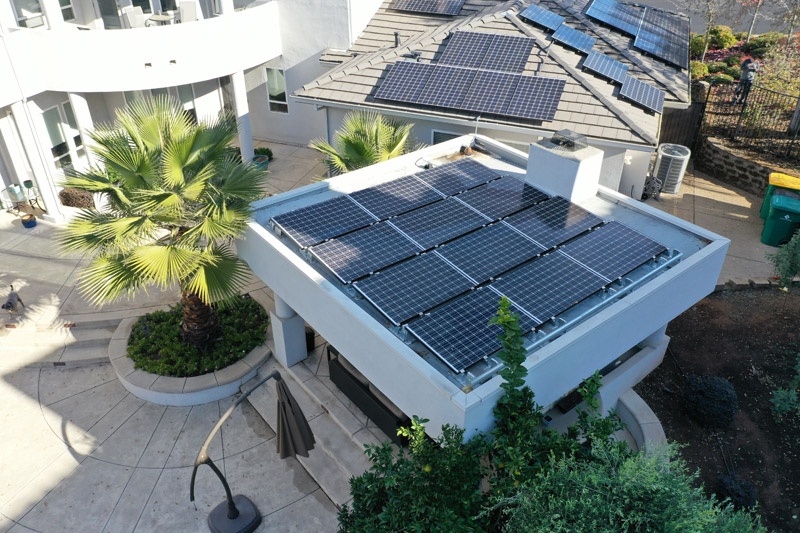California’s goal is to achieve 100% carbon neutrality by 2045.
Title 24 is updated every three years to keep our state on track towards this goal. The California Energy Commission’s latest version of the Building Energy Efficiency Standards (Title 24) went into effect on January 1, 2023.
At Excite Energy, we serve commercial construction companies, residential construction companies, and homeowners — staying current on all state requirements. Excite Energy designs and installs solar and battery systems that meet California Title 24 requirements — and do that in the most cost-effective way. Speak with a Title 24 expert today.

Title 24 Solar and Battery Requirements for Commercial Construction
By now most California builders know about the solar mandate for new commercial construction that the California Energy Commission (CEC) implemented in 2019, but few are aware that the latest changes to the Building Energy Efficiency Standards (Title 24) include battery storage system requirements, effective January 1, 2023.
Commercial battery storage systems are also required for all commercial construction as of January 1, 2023, and the rated energy and power capacity of these systems cannot be less than the minimum size determined by Equation 140.10-B and Equation 140.10-C (see all equations below).
The 2019 standards required that all new commercial buildings have designated roof space for future solar panels, and construction in the following categories must have a solar system installed:
- Grocery
- High-rise multifamily
- Office
- Financial institutions
- Unleased tenant space
- Retail
- School
- Warehouse
- Auditorium
- Convention center
- Hotel/motel
- Library
- Medical office building or clinic
- Theater
Request a Quote
What Size Solar and Battery System Do You Need for Title 24?
Title 24 specifies that the solar system can’t be less than the minimum size determined by Equation 140.10-A, or the total of all available Solar Access Roof Areas (SARA) multiplied by 14 W/ Ft2.
SARA includes the area of the building’s roof space capable of structurally supporting a PV system, and the area of all roof space on covered parking areas, carports and all other newly constructed structures on the site that are compatible with supporting a PV system per Title 24, Part 2, Section 1511.2.
Excite Energy takes the guesswork out of Title 24 calculations.

Talk with one of our Title 24 experts.
Title 24 Equations for Calculating Solar and Battery System Sizes
These are the equations that the CEC has published for calculating solar and battery system requirements.
140.10-A, Photovoltaic Direct Current Size
kWPVDC = (CFA x A) / 1000
kWPVDC = Size of PV system in kW
CFA = conditioned floor area in square feet
A = PV capacity factor specified in Table 140.10-A for the building type

Equation 140.10-B – Battery Storage Rated Power Capacity
kWbatt = kWPVdc x B / D0.5
kWbatt = Rated usable energy capacity of the battery storage system in kWh.
kWPVdc = PV system capacity required by Section 140.10(a) in kWdc.
B = Battery energy capacity factor specified in Table 140.10-B for the building type.
D = Rated single charge-discharge cycle AC to AC (round-trip) efficiency of the battery storage system.

Equation 140.10-C Battery Storage Rated Power Capacity
kWbatt = kWPVdc x C
kWPVdc = PV system capacity required by Section 140.10(a) in kWdc.
C = Battery power capacity factor specified in Table 140.10-B for the building type
The most important thing to know about these commercial requirements equations is we calculate them for you!
Centralized vs Decentralized Storage Systems — Reduce Cost and Meet Title 24 Requirements
At Excite Energy, we install and work with centralized and decentralized storage systems. It’s important to understand your options as you evaluate potential solar installers and the solutions they offer. Many only provide centralized storage. But if your goal is to meet the Title 24 minimum requirements in the cheapest way possible, decentralized storage systems are worth considering. Decentralized systems eliminate the need for large storage containers with fire suppression, cooling, concrete pads, etc. Connect with one of our commercial solar experts to learn more about the differences and receive a design that is substantially more economical.
When is a solar system NOT required under California Title 24?
- If the total available Solar Access Roof Area (SARA) is less than 3% of the conditioned floor area
- If the SARA contains less than 80 contiguous square feet
- If the PV system required is less than 4kW
- If the building has enforcement-authority-approved roof design where it is not possible to meet ASCE 7-16, Chapter 7, Snow Loads
- If it is a multi-tenant building where the load-serving utility doesn’t offer either virtual net energy metering (VNEM) or community solar programs

When is a battery system NOT required under California Title 24?
- If the installed solar system is less than 15% of the size determined by Equation 140.10-A
- If the ESS requirement is less than 10 kWh of rated capacity
- If a single-tenant building is less than 5,000 ft2conditioned floor area
- If the building is located in Climate Zone 1 (northern Coast of California)
Title 24 Solar and Battery Systems for New Residential Construction
Title 24 requirements can be triggered with an addition to a home or building an ADU. New home construction requires a Title 24 report. The report will include the requirements for the size of solar system. We can help you review what is required, determine the most cost-effective way to implement it, uncover any issues integrating with an existing system (if applicable), and provide the plans with a Professional Engineer stamp for the building department. The building department will not review your plans until solar plans are included. We also can provide a quote for installation of the solar system.

Talk with one of our Title 24 experts.
Read the full Title 24 standards from the California Energy Commission here.